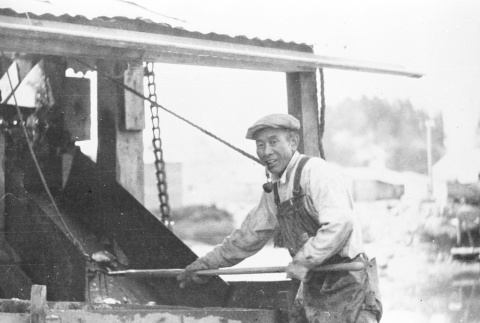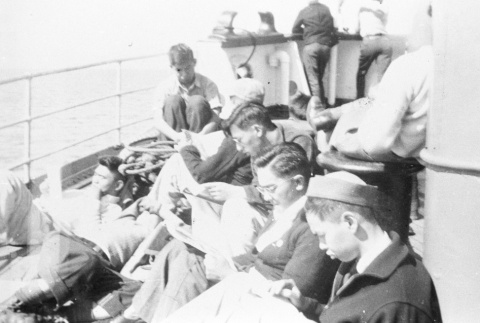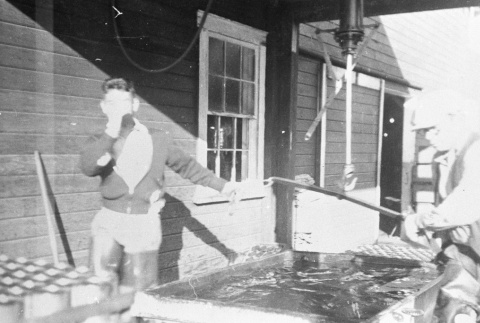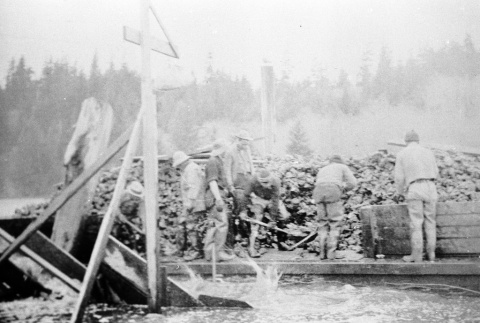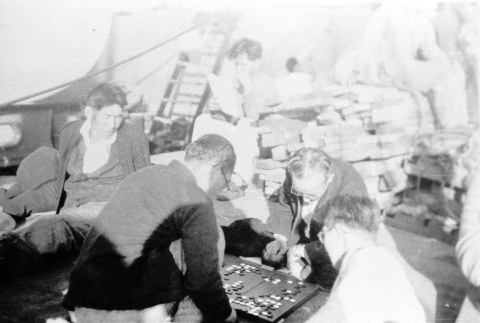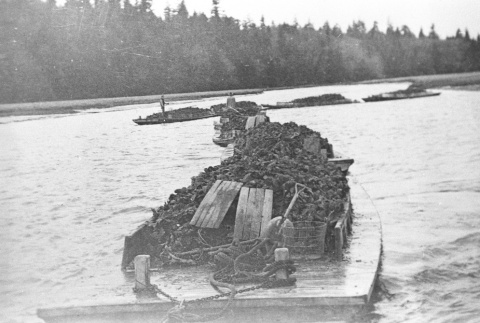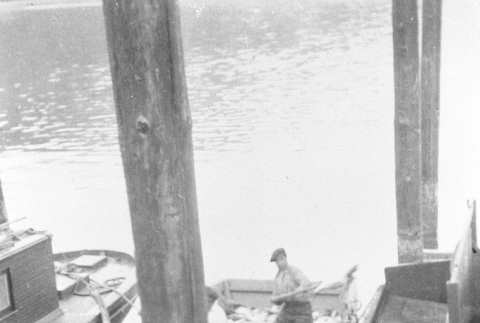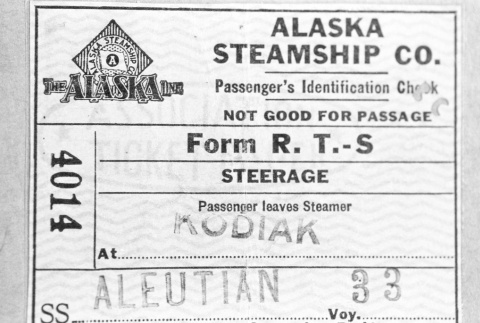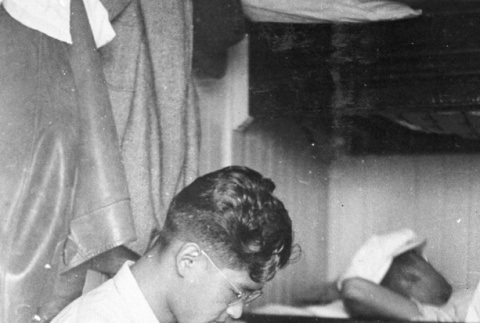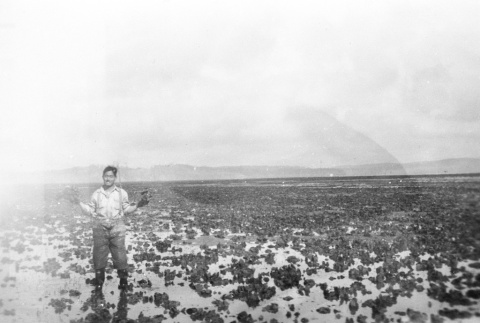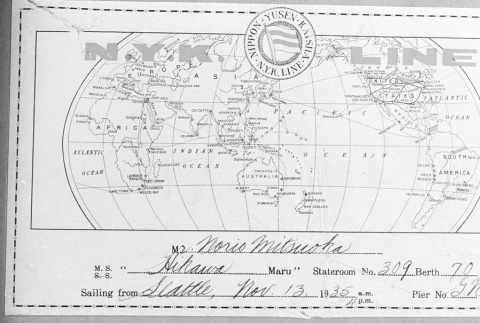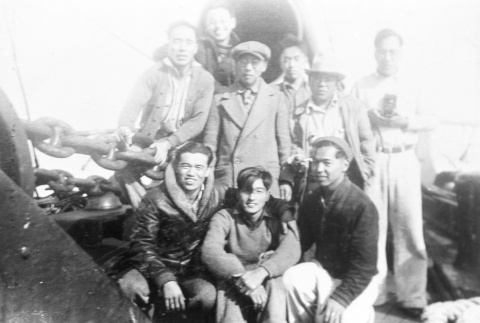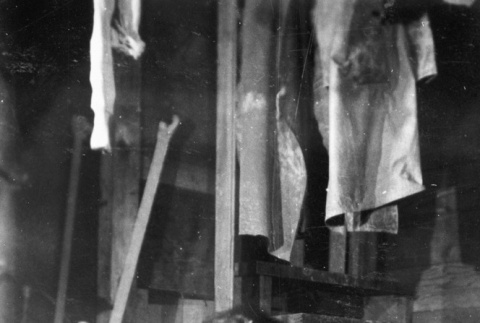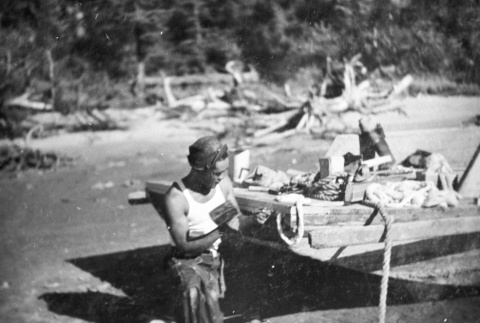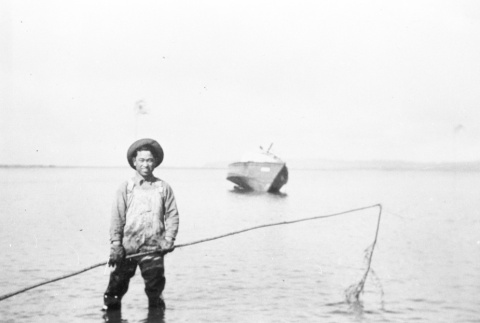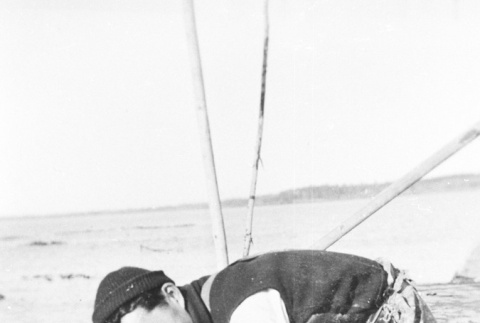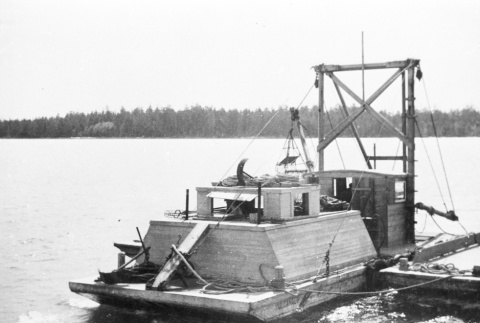Fishing and canneries
Japanese Americans found work at salmon canneries along the Columbia River in Oregon and Washington, and their labor was welcomed in Alaskan towns such as Ketchikan and Petersburg as early as the 1890s. They traveled by ship to the cannery towns, where they slowly developed small communities whose population swelled with the yearly arrival of workers. Issei (Japanese immigrant) entrepreneurs started the oyster industry from scratch in Puget Sound. Japanese American oyster farms became thriving businesses before World War II.
Industry and employment
(481)
Fishing and canneries
(256)
Related articles from the
Densho Encyclopedia :
Takahashi v. Fish and Game Commission
256 items
256 items

img
Oyster farmer (ddr-densho-15-115)
Mr. Mukai steering oysters into a box, where they were steamed open for canning.
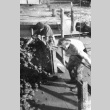
img
Unloading oysters from a bateau (ddr-densho-15-105)
These two farmers are unloading oysters from a bateau for processing. Left to right: Chuck (last name unknown) and Jack Tanabe.
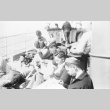
img
Men on ship's deck (ddr-densho-15-33)
These Japanese Americans are on their way to work in the Alaskan canneries. The man lying down on the far left is Mike Hirahara. The three men closest to the camera from top to bottom are Min Kanazawa, (first name unknown) Sano, and George Nojiri.
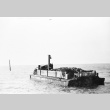
img
Scow (ddr-densho-15-119)
The scow was used to gather oysters. A winch-operated dredge was dragged across the oyster beds at high tide, and the harvested oysters were then emptied onto the scow or a bateau. In order to deliver the oysters to the processing plant, both the scow and the bateau had to be towed.

img
Two men washing canned salmon (ddr-densho-15-90)
Fred Kosaka (left) and (first name unknown) Takehara wash cans of salmon that have just been cooked. Washing was necessary to remove debris produced during the cooking process.
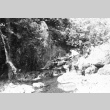
img
Two men fishing for trout (ddr-densho-15-91)
Fred Kosaka (top) and (first name unknown) Sano fish for Dolly Varden, a type of trout. The two men were in Alaska to work in the canneries.
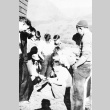
img
Men salting salmon (ddr-densho-15-22)
Pictured at Shear Water Bay near Kodiak Island, these Japanese Americans are salting the nose area of the salmon, which will later be pickled. Pickled nose cartilage was considered a delicacy.
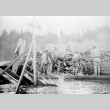
img
Unloading oysters from a bateau (ddr-densho-15-107)
These workers are unloading oysters from a bateau at the processing area. The oysters were shoveled into a hopper and onto a conveyor belt that led into the processing area, where they were opened.
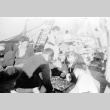
img
Men playing go (ddr-densho-15-26)
These Japanese Americans are seen traveling to Alaska to work in the canneries. The man on the left facing the camera is Mr. Abe.
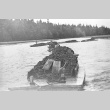
img
Oyster bateaux (ddr-densho-15-106)
The seven oyster bateaux shown here are about to be towed to the processing area.
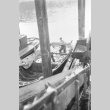
img
Salmon cannery (ddr-densho-15-88)
Mike Petrakov unloads salmon onto a conveyor belt for processing. Many Japanese Americans also worked for this same cannery.
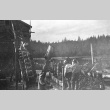
img
Unloading oysters from a bateau (ddr-densho-15-108)
These workers are unloading oysters from a bateau at the processing area. The oysters were shoveled into a hopper and onto a conveyor belt (left side of image) that led into the processing area, where they were opened.
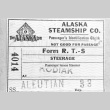
doc
Steamship identification ticket (ddr-densho-15-19)
This ticket belonged to Norio Mitsuoka, who was on his way to Alaska to work in the canneries.

img
Cabin quarters (ddr-densho-15-37)
Yozo Sato reads during the voyage to Alaska. Sleeping on a bunk was a luxury. Most passengers had to sleep on cots.
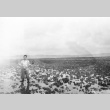
img
Farmer standing on an oyster bed at low tide (ddr-densho-15-103)
Mr. Okazaki stands on an oyster bed at low tide.

doc
Steerage ticket cover (ddr-densho-15-24)
This ticket belonged to Norio Mitsuoka, who was eighteen at the time he traveled to Japan.
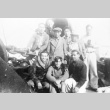
img
Workers traveling to canneries (ddr-densho-15-21)
These cannery workers are aboard the steamship "Aleutian" on its way to Alaska. Three individuals are identified: Hiroshi Yamada (middle front), Hiro Nishimura (right front), and Kenny Nakatani (back right).

img
Oyster farmer taking a bath (ddr-densho-15-95)
Norio Mitsuoka taking a bath. The water supply was limited, and workers had to depend on rainwater, which was collected in vats (behind the barrel), for bathwater.
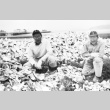
img
Two men with oyster shells (ddr-densho-15-120)
Hiroshi (left) and Masaru Odoi punched holes into oysters shells. The shells were strung on wire and hung on racks in the water to catch oyster spawn. Afterwards, farmers spread the shells over a bed. This was an experimental way of hatching oysters in the 1930s.
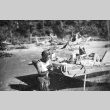
img
Caulking an oyster bateau (ddr-densho-15-110)
Norio Mitsuoka caulking an oyster bateau to make it waterproof.

img
Marking an oyster bed (ddr-densho-15-111)
Emil Nakao marking an oyster bed. The bed was marked with long poles at low tide, allowing farmers to gather the oysters with tongs at high tide.
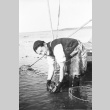
img
Oyster farmer (ddr-densho-15-97)
"Turk" Fujiya picking oysters at low tide. A bateau, or small barge, that carried the oysters is seen in the background to the right. Long poles were used to mark the cleared areas so that the bateau would not sit on unharvested oysters.
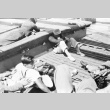
img
Men on ship's deck (ddr-densho-15-39)
These Japanese Americans are relaxing on deck on their way to Alaska to work in the canneries. The man glancing at the camera is George Izui, whose family ran the Panama Drugstore in Seattle's Nihonmachi.
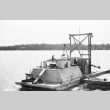
img
Motorized scow (ddr-densho-15-117)
This scow belonged to G. T. Mogan, one of the organizers of the Willa Point Oyster Company. The scow was equipped with a motorized dredge that farmers used to harvest oysters at high tide. The empty dredge can be seen on the left side of the boat toward the back. Two bateaux are connected to the …
